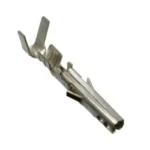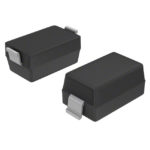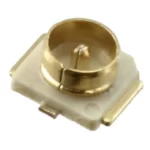Unlock Incredible Performance with Ceramic Capacitors!
Introduction to Ceramic Capacitors
A ceramic capacitor is an electrical component that stores electrical energy in an electric field between two or more conductors. Ceramic capacitors have two terminals, one positive and one negative, and are used to stabilize voltages and control currents in electronic circuits. They are made up of a dielectric material, usually ceramic, which is sandwiched between two metal plates. Ceramic capacitors are used in many types of electrical equipment, from computers and cell phones to appliances and industrial machines.
Ceramic capacitors are widely used in consumer electronics, telecommunications, and automotive applications due to their excellent electrical performance, low cost, and wide range of available sizes. They are also very reliable and can withstand high temperatures, making them ideal for high-power applications.
How Ceramic Capacitors Work
Ceramic capacitors work by storing electrical charge in an electric field between two conductors. When a voltage is applied to the capacitor, the ceramic dielectric material allows the electrical charge to flow between the two plates. The amount of charge stored in the electric field is determined by the size of the capacitor and the type of dielectric material used.
When a voltage is applied to the capacitor, the electric field between the two plates creates an electric field that attracts electrons to the negative plate and repels them from the positive plate. This creates an imbalance in the electric field, causing electrical current to flow through the circuit.
When the voltage is removed from the capacitor, the electric field between the two plates dissipates, allowing the capacitor to discharge. The amount of charge stored in the electric field is determined by the size of the capacitor and the type of dielectric material used.
Benefits of Ceramic Capacitors
Ceramic capacitors offer a number of benefits over other types of capacitors. For one, they are relatively inexpensive and widely available. They also have excellent electrical performance and can withstand high temperatures, making them ideal for high-power applications. In addition, ceramic capacitors are very reliable and long-lasting.
Ceramic capacitors also offer a wide range of sizes, allowing them to be used in a variety of applications. And because they are small and lightweight, they are easy to install and don’t take up much space.
Types of Ceramic Capacitors
There are several different types of ceramic capacitors, each with its own strengths and weaknesses. The most common types are monolithic, multilayer, and film capacitors.
Monolithic ceramic capacitors are the most economical type of capacitor, and they are typically used in low-power applications. They are made from a single piece of ceramic material, and they are available in a wide range of sizes.
Multilayer ceramic capacitors are more expensive than monolithic capacitors, but they are much more powerful. They are made from multiple layers of ceramic material, and they are typically used in high-power applications.
Film capacitors are the most expensive type of ceramic capacitor, and they are typically used in high-frequency applications. They are made from a thin film of ceramic material, and they are available in a wide range of sizes.
Specifications of Ceramic Capacitors
When choosing a ceramic capacitor, it’s important to consider the capacitor’s specifications. The most important specifications to consider are the capacitance, voltage rating, and temperature rating.
The capacitance of a ceramic capacitor is measured in Farads (F). The capacitance of a capacitor determines how much charge it can store.
The voltage rating of a ceramic capacitor is measured in Volts (V). The voltage rating determines how much voltage can be applied to the capacitor without damaging it.
The temperature rating of a ceramic capacitor is measured in Celsius (C). The temperature rating determines how much heat the capacitor can withstand without being damaged.
Applications of Ceramic Capacitors
Ceramic capacitors are used in a wide range of applications, from consumer electronics to industrial machinery. In consumer electronics, ceramic capacitors are used to stabilize voltages and control currents in circuits. They are also used in telecommunications systems, automotive applications, and military equipment.
In industrial applications, ceramic capacitors are used to control the flow of electricity in motors, generators, and other machinery. They are also used in power supplies and high-voltage applications.
The Advantages of Ceramic Capacitors
Ceramic capacitors offer a number of advantages over other types of capacitors. For one, they are relatively inexpensive and widely available. They also have excellent electrical performance and can withstand high temperatures, making them ideal for high-power applications. In addition, ceramic capacitors are very reliable and long-lasting.
Ceramic capacitors also offer a wide range of sizes, allowing them to be used in a variety of applications. And because they are small and lightweight, they are easy to install and don’t take up much space.
Considerations When Choosing Ceramic Capacitors
When choosing a ceramic capacitor, there are a few things to consider. First, it’s important to consider the capacitor’s specifications, including its capacitance, voltage rating, and temperature rating. It’s also important to consider the application in which the capacitor will be used. Different types of ceramic capacitors are better suited for different applications.
In addition, it’s important to consider the size and weight of the capacitor. Ceramic capacitors come in a wide range of sizes, and some are much larger and heavier than others. It’s important to choose a capacitor that will fit in the available space and can handle the weight of the device in which it will be installed.
Troubleshooting Ceramic Capacitors
If you’re having trouble with your ceramic capacitor, there are a few things you can do to troubleshoot the issue. First, check the capacitor for any signs of damage, such as broken leads or burned components. If the capacitor appears to be damaged, it’s best to replace it.
If the capacitor appears to be undamaged, check the connections to make sure they are secure and there are no shorts or open circuits. If the connections are good, check the voltage rating of the capacitor to make sure it is not being over-stressed.
Finally, if the capacitor appears to be functioning properly, check the capacitance to make sure it is appropriate for the application. If the capacitance is too low, the voltage may not be stabilized properly and the device may not function correctly.
Conclusion
Ceramic capacitors are an essential component in a wide range of electrical devices, from everyday consumer electronics to complex industrial machinery. Ceramic capacitors offer a number of benefits, including excellent electrical performance, low cost, wide range of sizes, and reliability. When choosing a ceramic capacitor, it’s important to consider the capacitor’s specifications, the application in which it will be used, and the size and weight of the capacitor. With careful consideration and proper installation, ceramic capacitors can help unlock incredible performance in any device.
If you’re looking for reliable and cost-effective ceramic capacitors for your project, be sure to check out our selection. We have a wide range of ceramic capacitors to suit any application and budget.


